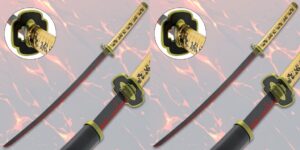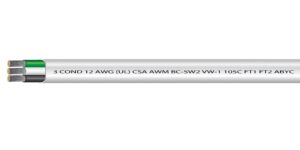
Alarm, control and instrumentation and security systems require special electrical cables that are uniquely suited to enable the accurate transmission of information. Whereas some electrical cables are chiefly intended to manage higher voltages to power buildings, lighting and other systems, alarm cables, like fire alarm cables for fire alarm systems or fire protective circuits, are better suited to carrying information and typically handle lower voltage loads.
Even among alarm cables such as those for fire alarm systems, there is a good deal of variance. For example, in the course of your discovery, you may notice that some cables are power non limited, whereas others are reserved for power limited fire alarm systems. Some cables are rated for use in plenum space whereas others should be reserved for use in riser space.
Another factor with which fire alarm cables must contend is EMI, or electromagnetic interference, which can pose a threat to the efficient operation of alarm systems. Luckily, some cables are specifically developed to be able to avert issues associated with it.
What Is EMI?
EMI, also known as electromagnetic interference, is a disturbance caused by electromagnetic forces or fields that can arise from both natural and manmade sources. Natural factors such as electrical storms and solar flares can produce EMI, but frequently manmade factors are to blame for the effects caused by EMI.
Most if not all electronic devices produce some level of electromagnetic interference, but transformers, generators and high-voltage power lines are all responsible for potentially very high levels of electromagnetic interference.
Typically, EMI, which is also sometimes referred to as radio frequency interference, or RFI, is classified as one of two types. Narrowband EMI refers to the EMI that is produced from electronic devices like phones and radio stations and is expected. Conversely, broadband EMI is unintentionally produced by a wide variety of systems and equipment.
How EMI Can Affect Fire Alarm Cables
Fire alarm cables, like all system and instrumentation monitoring cables, are highly susceptible to the potentially deleterious effects of EMI. While all electronic devices are susceptible to the effects of EMI, in alarm systems, EMI or RFI can hinder or slow down the transmission of information along the circuit. In extreme cases, electromagnetic interference can even halt the circuit entirely, crippling its ability to function as intended.
In systems like these, which carry information, EMI can also cause the loss of data, in addition to slowing or stopping their performance altogether, which can present an issue even when the system comes back online.
Since the operation of the nodes in a fire alarm circuit, such as the smoke detectors, alarms and sprinklers, are vital to public health and safety, it sometimes becomes necessary to protect fire alarm cables from the effects of electromagnetic interference, just as it becomes necessary to protect other instrumentation and alarm systems.
Luckily, there is a solution for issues associated with EMI, and it takes the form of shielding in alarm cables. Shielding, which often looks like nothing more than an innocuous wrapping of silver foil, is specifically intended to help protect the cable underneath from the effects of electromagnetic interference. While it is a good idea to shield alarm cables as a general practice, it’s necessary to do so in any situation wherein there is a noticeable presence of interference. Otherwise, the system will neither communicate nor function in accordance with its intended purposes.
Learn More at EWCS Wire!
Whether you’re looking for shielded fire alarm cables themselves or you simply would like to learn more about EMI, its causes and its potential effects, visit EWCS Wire at EWCSWire.com. Check their blog, live chat with them, or give them a call at 800-262-1598, and their specialists will be happy to help.


